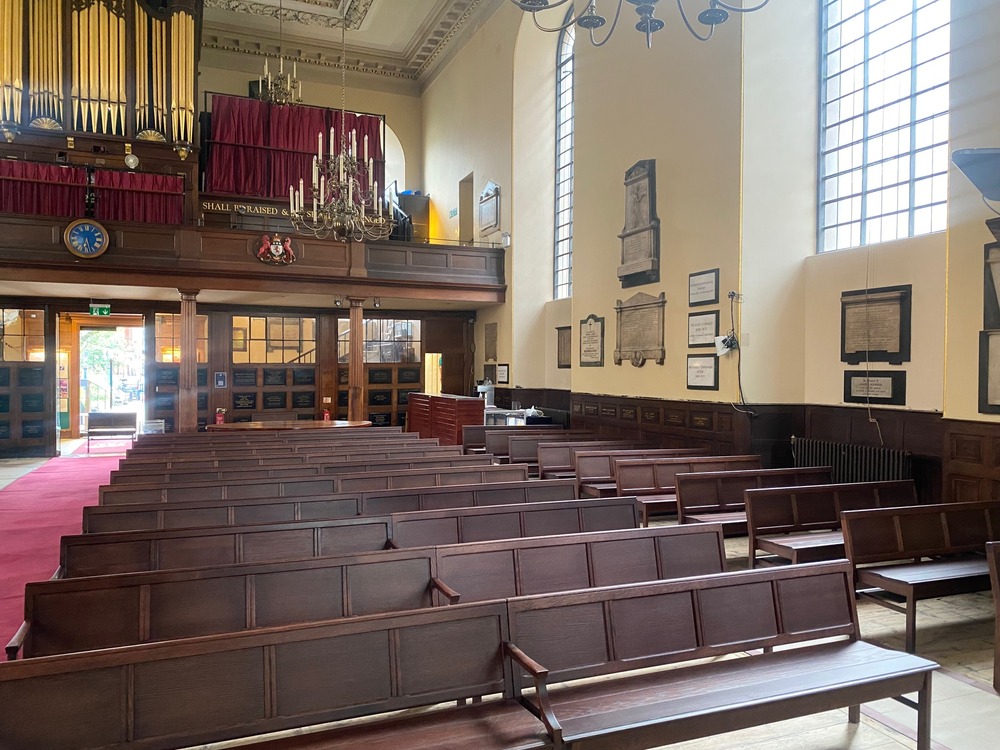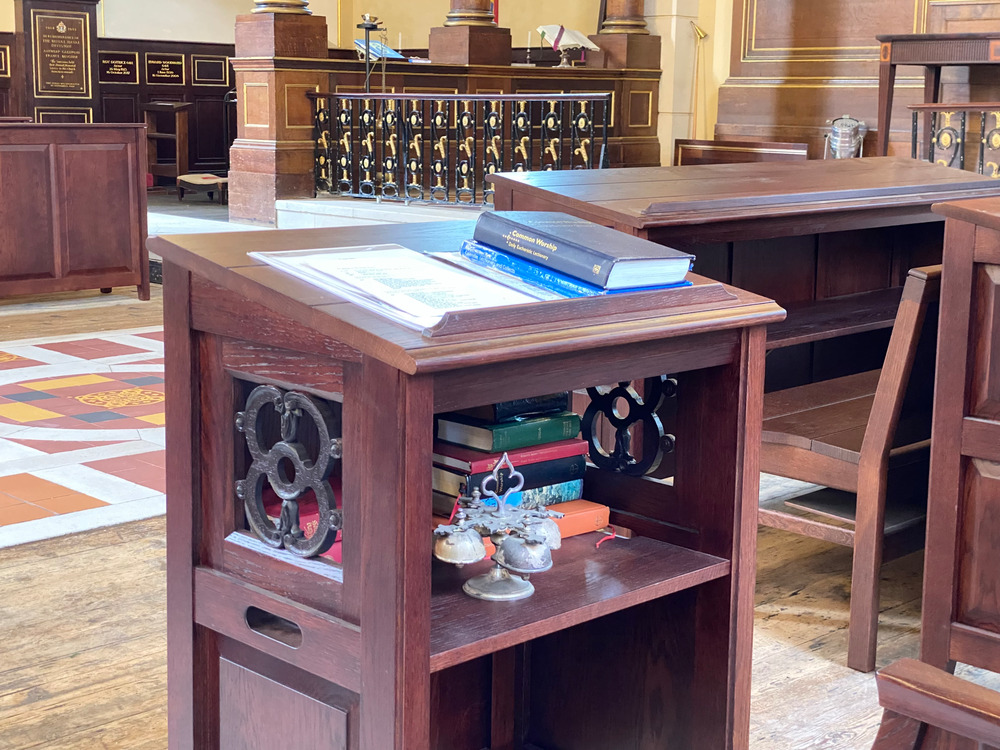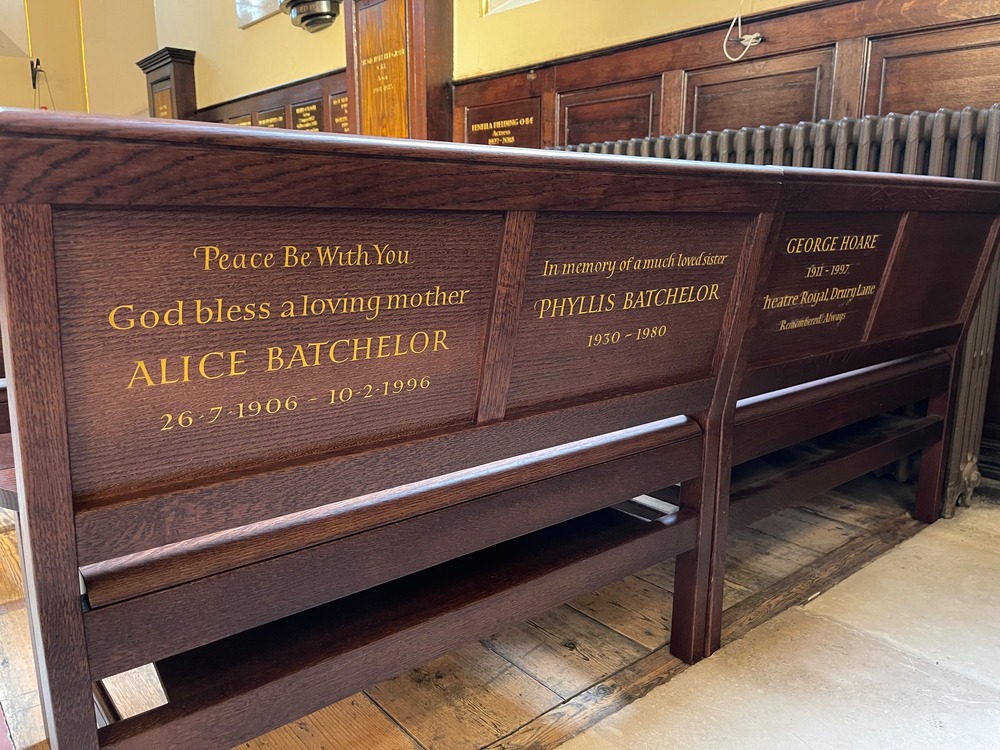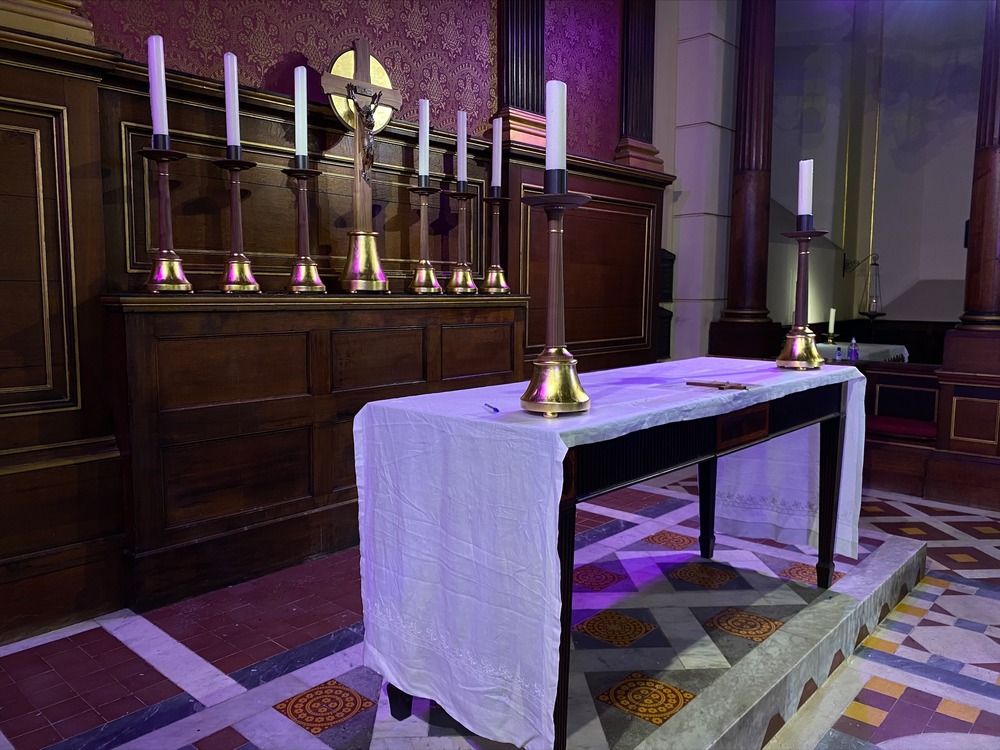The church has no parish hall but does have good acoustics and a fine organ. As such, it is a perfect venue for lunch-time and evening concerts, plays, lectures, flower-festivals, as well as memorials and weddings. Rumour has it that it can also accommodate a catwalk for London Fashion Week.
Nevertheless, it is still a parish church, with a local community, closely associated with the residents of the area, its school and its market square. It still needs to have a default layout when it can be ‘at rest’, speaking of its purpose as a church, a place of repose in a busy city.
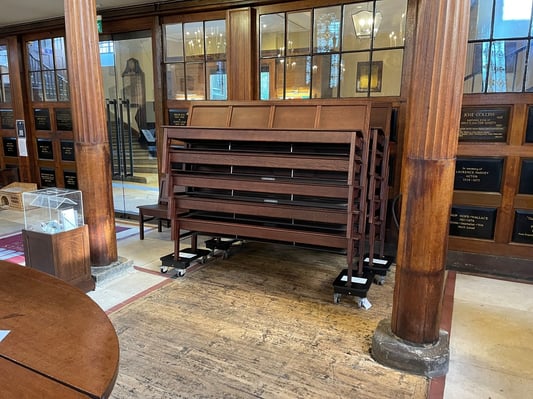
Our involvement
This has been our parish church, too, and we’re in to our fifth decade of close connections.
Luke Hughes as a student, in the 1970s, when the whole area was scheduled for demolition, had been caught up with some of the street demonstrations and protest marches organised to try to stop the Covent Garden market buildings and much of the surrounding area being flattened by property developers. The church was always the rallying point in those heady days.
Later, just after the market buildings had been restored and re-opened in 1980, we moved our workshop from Lambs Conduit Street in Bloomsbury to Drury Lane. One of the very first jobs ILuke ever did was to make some wheel-chair ramps and display boards for the church. Earlier this year we celebrated a 40th anniversary (a year late, thanks to COVID -19) of living and working in Covent Garden. And we celebrated it in the church, because now we could.
This is thanks to the new Windsor bench stacking pews, a concept we invented thirty years ago. In our view, stacking pews look far better than chairs in almost all church interiors, whatever their age or style. They enable congregations to bunch up, are easy to move, lighter and more versatile than a conventional church bench and less obtrusive than chairs. It is a concept that, with changes to sizes, colours, mouldings, can accommodate a huge variety of layouts and be adapted to suit the architectural style of each building. Ideal church furniture.
So it is with St Paul’s. The building is listed Grade 1 so there was understandable caution from the Church Buildings Council, Historic England and other conservation groups about any changes whatsoever to the interior. Their concerns were turned to advantage. Minor modifications were made to the design of our standard stacking pews to keep the architectural feel consistent with the interior as it had evolved and this turned out to so successful that the Chancellor of the London Diocese not only resoundingly endorsed the proposed plans, but also publicly congratulated the parish for the care in their submission and Luke Hughes and Company for their approach.
The most recent church furniture scope was for new seating for nearly 300 using a new version of our stacking pew concept (now known as the ‘Windsor bench’), new choir music desks, clergy seating and some wainscot cladding to disguise the bar and kitchen servery. Further works included a new crucifix and a set of gilded walnut candle-stands to sit behind the altar on the reredos, under the copy of Botticelli’s Madonna and Child (the original of which hangs in the Uffizzi Gallery in Florence). We are currently working on modifications to the area around the font, the sound control unit and the pulpit. The aim is to respect the history of the interior, reduce clutter and create an atmosphere that is not only familiar and appropriate but also practical to use and profitable for the parish.
Intriguingly, one of the livelier recent social events was the celebration of the 90th birthday of Mark Girouard, the former architectural editor of Country Life, a party that was attended by most of the nation’s distinguished architectural historians along with Inspectors from Historic England. Even their combined acute visual antennae barely noticed how, in less than fifteen minutes before they arrived, the church pew benches had been cleared away, stacked on storage dollys and neatly aligned against the wainscot.
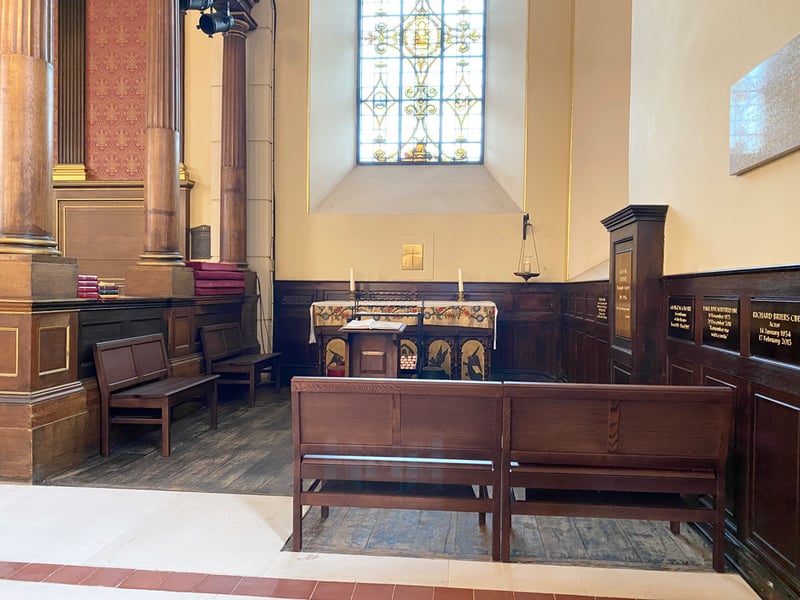
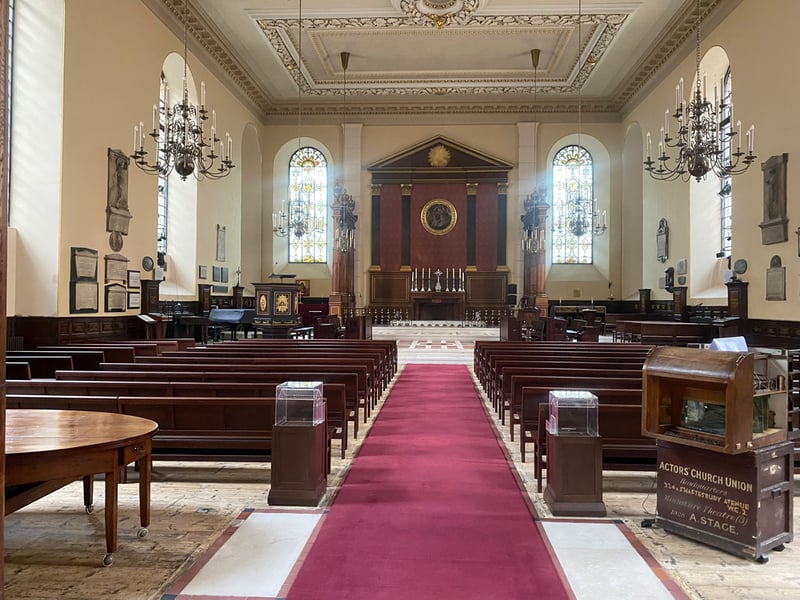
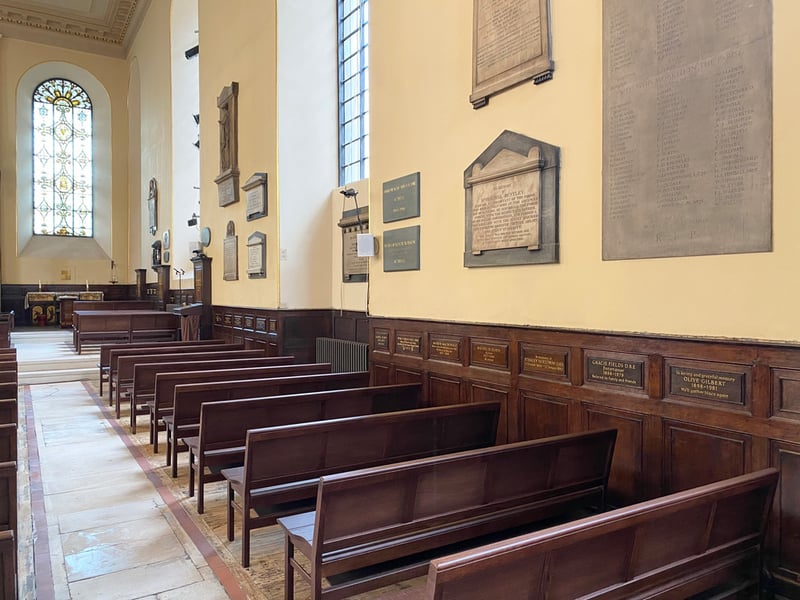
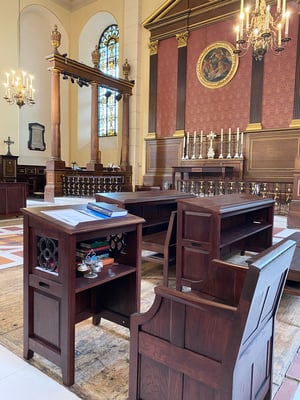
Photography © Max Lacey
Enjoy the article? Delve deeper into Luke Hughes & Company’s place in the Arts and Crafts tradition with the fascinating new book 'Furniture in Architecture' . Available through Thames & Hudson

